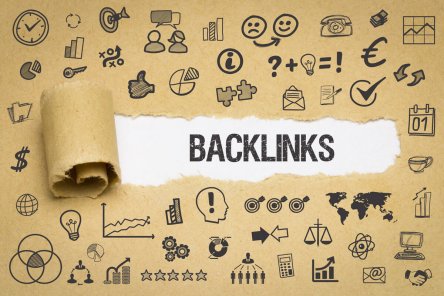Recruitment SEO Guide: How to Use Infographics to Get Quality Backlinks
Aside from being user-friendly and having excellent content, what do you think is another quality that separates successful recruitment websites from the rest? We believe it is having good backlinks.
When it comes to search engine optimisation, having quality backlinks is one of the secrets to having better online visibility. Google considers backlinks as a vital ranking factor. When many websites link to you, it tells the search giant that your site is an excellent source of relevant and useful content. Not only will this make your website more searchable online, but it also helps you establish yourself as a recruitment expert.
There are many ways to obtain quality backlinks from many different websites, but perhaps one of the most effective methods is by using infographics. By nature, humans are visual learners. As such, we learn faster when pictures or illustrations accompany the text we’re reading. Infographics bring the best of both worlds by combining short text with beautiful images. As a result, they help you educate and inform your audience while keeping them entertained and engaged.
Infographics are highly shareable, too. According to research, online users are three times more likely to share them than any other type of visual content. This quality makes them an effective backlink and lead generation tool.
Contents
Generating Backlinks with Infographics
In this recruitment SEO guide, we’ll teach you how to amass the power of infographics to gain quality backlinks. Follow these steps to improve your site’s search rankings and attract more traffic.
1. Choose a topic carefully
Your infographics should contain not just beautiful images, but also valuable information. More people are likely to share or link to your infographics if they have substance.
When creating infographics, the first thing you need to do is choose your topic carefully. Content with statistics usually gets many views and shares, so consider doing any job-related study or research. For example, you can survey the most in-demand jobs in certain parts of the UK.
If you don’t have the time to conduct your study or survey, you can always compile various statistics and present them in your infographics. Alternatively, you can create a quick guide about a particular topic, such as what to wear in your job interview or how to make a good impression on your first day of work.
2. Determine where you should post your content
Next item in this recruitment SEO guide is to identify where you should post your infographics. Your site should be your priority since you’d want other websites to link to you. Since page loading speed is a crucial search ranking factor, ensure that your infographics have fast loading time. It also helps to post them on other sites, such as Pinterest and Infographic Journal, to give your content more exposure.
3. Publish your infographics on similar websites
Consider posting your infographics on the sites of other recruiters. While you are essentially teaming up with your competitors, getting your content published on sites similar to yours can help you find new members of your audience.
If you don’t know who to ask, you can use ahrefs.com. It can help you identify websites where you can potentially post your content. Start by typing in a keyword into the site’s “Content Explorer” section, and it will give a list of webpages that contain the keywords you entered. From the list, identify the sites where you can submit your infographic.
4. Conduct an email outreach programme
Once you have identified where you can potentially post your content, the next step is to contact the people behind those websites. You may send an email to their content manager, editor, or marketing officer.
Doing an email outreach programme can help you gain their interest. You can send the emails manually or use an automated mailing tool. Each method has advantages and disadvantages, so make sure to choose the one that is more suited for your situation.
For instance, manually sending emails is usually time-consuming. However, you can tailor your message to better suit its recipient. Conversely, using an automation tool can help you save time and effort, but the caveat is your emails all sound generic.
No matter which method you choose, ensure that your email is mobile-friendly since many people these days use their mobile devices to read their emails. It also helps to use shorter subject lines because emails with shorter subject lines have more chances of being opened. Finally, end your emails with a strong call to action.
5. Promote your infographics
The final step in this recruitment SEO guide is to promote your infographic. You can use your social media pages to encourage your audience to view your content. By spreading the word about your infographics, you can gain more traffic and backlinks for your site.
Give Your Infographics a Boost with Recruitment Traffic
Using infographics is a great way to gain quality backlinks and make your website more search engine-friendly. It also makes your site more memorable as it allows you to provide your audience with something educational and engaging.
If you want to take your infographics and the rest of your web content to the next level, we can help. At Recruitment Traffic, we have content marketing and SEO experts who can provide you with the online marketing solutions you need. Contact us today.
Drive Your Recruitment Business Towards The Best Results.
Talk to us about how we can help.






